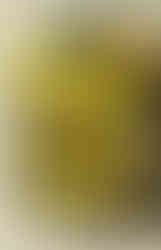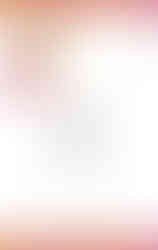"I want the reader to judge a book by its cover! I’m trying to catch their attention in a sea of book covers, whether in store or online, and then communicate that this is the kind of book they want to read."
- Kelly Hill, book designer, Penguin Random House
What was the path that led you to becoming a book cover designer?
I remember taking a Canadian Literature course in my third year at University of Guelph (I was an English major and Art History minor). The reading list was full of books from the New Canadian Library series from McClelland & Stewart. They were a very simple design with a piece of Canadian art on each cover and I thought “I would love to choose the art to go on these books! Is that someone’s job?”
That was my first thought of book design and obviously at that time I didn’t really understand what book design was. After Guelph, I did the Book and Magazine Publishing program at Centennial College. My first position in publishing was as a promotions assistant at M&S, designing catalogues and ads. I was hired to do the same job at Random House, and eventually I mustered up the courage to walk down the hall to talk to the art director about designing books. He gave me my first cover to design--For Joshua by Richard Wagamese.
What is your approach when taking on a new book project?
I gather as much information as possible from the editor, usually in the form of a conversation and a creative brief. The brief includes a description of the book, recurring imagery, meaning of title, comparison titles, audience, and hopes and dreams of the sales manager and any suggestions from the author.
I will also read the manuscript, or at least some of it. And then you begin, sometimes with a clear (or foggy) concept, sometimes with an image (or days of image research), sometimes with simply setting the type.
"A new project has all the excitement, potential, and terror of a blank white page. "
Where do your ideas and inspiration for a book cover come from?
Usually straight from the book itself. When I read a manuscript I’m looking for imagery or concepts that could visually represent the whole book. And then ideally the process of designing takes you in directions you haven’t thought of. And I’m always looking at work of other graphic designers, photographers, and illustrators and artists.
Book Designer Kelly Hill embroidered the endpaper art for Margaret Atwood's The Testaments.
Can you walk us through one specific book cover design from beginning to end?
I’ve done redesigns of Margaret Atwood’s backlist novels and poetry, and I embroidered the endpaper art for the hardcover of Canadian edition of The Testaments, but Dearly is the first brand new Atwood book I’ve ever designed. So after a conversation with M&S’s publisher Jared Bland, I was given access to the manuscript, on the pinkie-swear condition of confidentiality!
As I read the poems I made notes on repeating images and ideas, big and small: climate change, love, birds, death, fungi, blackberries, spiders, plastic, aliens, lichen, loss. And then I went in search of images, always thinking about the relationship between image and title. Closeups of feathers, undersides of mushrooms, Audubon artwork, a portrait of a rabbit in a fur coat, the title spelled out in balloons, all made it into my first round of designs. But the one that caught the editorial team’s attention was an 19th century painting of two birds that I found on the title page of Graeme Gibson’s Bedside Book of Birds.
Narrowed down to this image with its connection to the author (Graeme Gibson is Margaret Atwood’s late husband), I played with type and colour variations. I wanted to use a very modern typeface to contrast with the traditional historical feel of the painting. And when you have the name Margaret Atwood (a designer’s dream) AND a short title (also a designer’s dream), you make the type BIG. I even had neon yellow type on the version that went to the author, but she thought it just seemed too . . . yellow. So I brought it back to a still-bright-but-not-so-showoff-y yellow, and we had a final, approved cover.

Final Cover
Was there a book project you worked on that was challenging creatively but in the end you’re super proud of?
Women Talking is an incredible piece of writing, with such devastating subject matter, that I felt a real responsibility to get it right. I’ve been designing for Miriam Toews since A Complicated Kindness in 2004. And yet, for Women Talking I designed over 50 covers featuring quilts, barns, spools of thread, rural landscapes, horses, braids of women’s hair, women’s hands; finally and ironically we ended up with an all-type design. When I discovered I could spell LOVE and ANGER with the letters on the cover, I knew I didn’t need an image. (By contrast, the design for Fight Night, Miriam Toews’ most recent novel, was in my first round of options.)

Do you have a favourite book cover that you designed? What makes that one standout?
Life after Life by Kate Atkinson—even though it’s a few years old now—still stands out for me. After designing many different options, I came upon a recurring image of a fox in the manuscript, which felt like it had been put there by the author just for me as the book designer. The snowflakes came from the inventive way the story is told, with the narrative restarting over and over with the winter birth of the main character. And then by using playful shades of yellows and golds in the type, the design fell into place. Kate Atkinson loved it so much she had custom tiles created for her kitchen renovation using the image of the fox!

Do you have a favourite book cover that you did not design? Why does it resonate with you?
I’m constantly seeing covers I wish I had designed! Often designed by people I work with: Em by Kim Thuy, designed by Jen Griffiths, and Likeness by David MacFarlane, designed by Kate Sinclair, are both standouts on bookshelves right now. Strong type + strong colour is my favourite formula of the moment.
What part of the design process do you love the most?
My favourite part of the process is when the author approves. I know the cover is a sales tool in large part, but it’s more important to me that the author agrees we’ve got it right.

KELLY HILL is an award-winning book designer. She is the Author/illustrator of board books Anne’s Colors, Anne’s Numbers, Anne’s Alphabet and Anne’s Feelings. She does all kinds of crafting; the illustrations for her children's books are a combination of sewing and embroidery. Kelly lives near Eugenia, Ontario with her husband and two daughters.








































